The Fight to Legalize Gay Marriage, the Woman Who Couldn’t Be Silenced and Other New Books to Read
These June releases elevate overlooked stories and offer insights on oft-discussed topics
:focal(716x510:717x511)/https://tf-cmsv2-smithsonianmag-media.s3.amazonaws.com/filer/a7/6a/a76acea1-d0e3-4f1d-a26e-c90212971ca4/booksweek19.png)
When Hawaiian broadcast engineer Genora Dancel fell in love with Ninia Baehr, the daughter of a co-worker, in the summer of 1990, she had no qualms about proposing. But the pair soon faced an obstacle beyond their control: Hawaii, like every other American state at the time, prohibited same-sex couples from marrying. “Maybe I was just living in fantasyland, but, when you want to marry someone, that’s all you think about,” Dancel told Honolulu magazine in 2015.
Galvanized to action after learning that Baehr was barred from registering as a domestic partner on Dancel’s health insurance, the couple joined a lawsuit with far-reaching consequences. As journalist Sasha Issenberg writes in The Engagement, the State Supreme Court case Baehr v. Miike—which suggested that denying same-sex marriage licenses could constitute discrimination—marked a milestone in the decades-long struggle to legalize gay marriage, paving the way for Obergefell v. Hodges, the landmark U.S. Supreme Court decision that recognized such unions nationwide in 2015.
The latest installment in our series highlighting new book releases, which launched last year to support authors whose work has been overshadowed amid the Covid-19 pandemic, explores the battle to legalize gay marriage, the life of a 19th-century woman who exposed dire conditions in a psychiatric institution, a writer’s reckoning with slavery’s legacy in America, the stories of two people who gained sight and hearing as adults, and the reasons for humanity’s love of alcohol.
Representing the fields of history, science, arts and culture, innovation, and travel, selections include texts that piqued our curiosity with their new approaches to oft-discussed topics, elevation of overlooked stories and artful prose. We’ve linked to Amazon for your convenience, but be sure to check with your local bookstore to see if it supports social distancing–appropriate delivery or pickup measures, too.
The Engagement: America's Quarter-Century Struggle Over Same-Sex Marriage by Sasha Issenberg
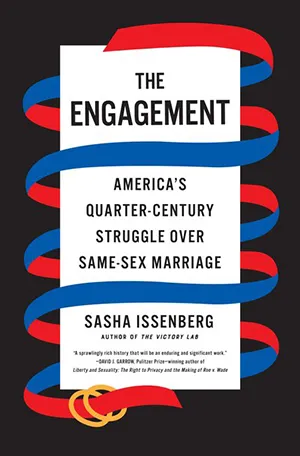
In this weighty, 928-page tome, Issenberg traces gay rights activists’ protracted fight to legalize same-sex marriage. Covering the years 1990 to 2015, the book begins with Dancel and Baehr’s case, offering an intimate look at the couple’s love story and how it shaped the next 25 years of legal debate. Far from intentionally sparking a national movement, Baehr v. Miike’s architect, Bill Woods—an activist and the director of the Gay and Lesbian Community Center of Honolulu—actually set his plan in motion as part of a “petty rivalry” with other local reformers, Issenberg tells Honolulu news outlet KHON2. “[It] was just a PR stunt that spiraled out of his control.”
Regardless of Wood’s motivations, the court case garnered attention nationally on both sides of the aisle, with LGBTQ activists building on the momentum to push for gay marriage in more states and conservatives taking the first steps toward the passage of the 1996 Defense of Marriage Act. In addition to navigating backlash from “political and religious foes” outside of the movement, gay rights proponents faced infighting between those who dismissed marriage as a flawed, patriarchal institution and others “who saw anything less than marriage as second-class status for same-sex couples,” notes Kirkus in its review.
Engagingly told, the volume seeks to provide a “definitive” account of how “gay marriage went from being a test of the moral and political imagination to settled policy in fifty states and a simple, even banal, fact of everyday life,” according to Issenberg.
The Woman They Could Not Silence: One Woman, Her Incredible Fight for Freedom, and the Men Who Tried to Make Her Disappear by Kate Moore
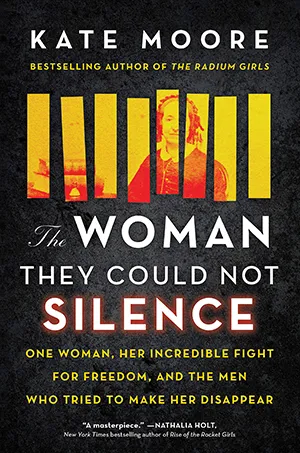
Kate Moore, author of 2017’s bestseller The Radium Girls, continues her efforts to shed light on women’s untold stories with the tale of 19th-century activist Elizabeth Packard. An Illinois mother of six, Packard’s outspoken support of women’s rights attracted the ire of her husband, a Calvinist minister. Feeling increasingly threatened “by Elizabeth’s intellect, independence and unwillingness to stifle her own thoughts,” per the book’s description, he had his wife committed to the Illinois State Asylum in the summer of 1860.
Packard spent the next three years under the watchful eye of physician Andrew McFarland, enduring involuntary confinement by bonding with other patients and refusing to cave in to calls to admit her “insanity.” As she quickly realized, many of the women imprisoned at the facility had only been placed there after angering their husbands; far from requiring treatment for mental illnesses, these individuals were institutionalized in order to keep them in line.
In 1863, Packard was released into her husband’s custody after being declared “incurably insane,” according to the Illinois History and Lincoln Collections. Made a virtual prisoner in her own home, she eventually managed to alert a neighbor to her plight and take her case to court. A jury took just seven minutes to find her legally sane. After this victory, Packard tirelessly advocated for women and the mentally ill, taking such steps as founding the Anti-Insane Asylum Society, publishing several books and campaigning for legal reform.
How the Word Is Passed: A Reckoning With the History of Slavery Across America by Clint Smith
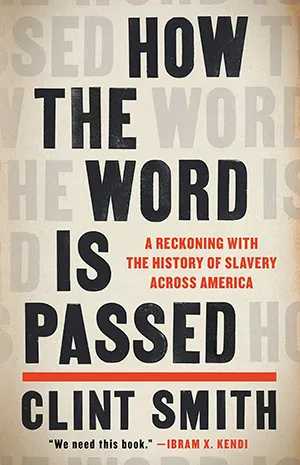
When Clint Smith’s hometown of New Orleans removed four Confederate monuments in 2017, the Atlantic staff writer and poet found himself wondering “about what it meant to grow up with all these homages to the oppressors of enslaved people.” As he told Publishers Weekly earlier this year, “I thought about how these statues were not just statues, but memorialized the lives of slave owners and how history was reflected in different places.”
This initial idea led Smith on a cross-country, multi-year journey to sites associated with slavery, from Thomas Jefferson’s Monticello estate to the Whitney Plantation to the Louisiana State Penitentiary at Angola, a maximum-security prison built atop a former plantation. (The writer also visited one international destination: the House of Slaves in Dakar, Senegal.) Drawing on interviews, insightful observation and scholarship, he examines how each location addresses its painful past, concluding that “the more purposefully some places have attempted to tell the truth about their proximity to slavery and its aftermath, the more staunchly other places have refused.”
Due to the dominance of the cult of the Lost Cause, the Confederacy is memorialized far more readily than the institution of slavery itself, according to Smith. But “the history of slavery is the history of the United States,” he argues, “not peripheral to our founding [but] central to it.” To move forward as a country, Smith adds, the nation must embark on “a collective endeavor to learn and confront the story of slavery and how it has shaped the world we live in today. … At some point it is no longer a question of whether we can learn this history but whether we have the collective will to reckon with it.”
The book’s epilogue finds the author visiting the Smithsonian’s National Museum of African American History and Culture with his grandparents, who grew up in the Jim Crow South. After the trip, Smith’s grandmother tells him that she recognized the museum’s recounting of segregation and racism as her own. “I lived it,” she says simply. To her, reflects Smith, “This museum is a mirror.”
Coming to Our Senses: A Boy Who Learned to See, a Girl Who Learned to Hear, and How We All Discover the World by Susan R. Barry
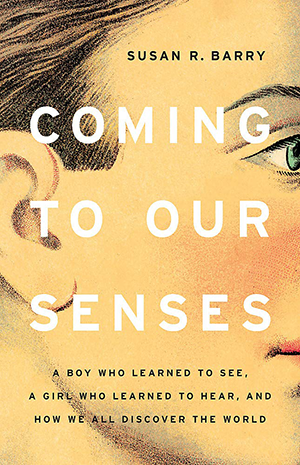
For much of her life, neurobiologist Susan R. Barry saw the world in two dimensions. “Space was very contracted and compacted,” she told NPR in 2010. “So if I looked at a tree, the leaves or the branches would appear to overlap one in front of another. But I didn't actually see the pockets of space between the actual branches.” Born cross-eyed, Barry was 48 when she underwent vision therapy that enabled her to see in three dimensions—a life-changing journey cataloged in the 2010 memoir Fixing My Gaze.
The scientist’s latest book, Coming to Our Senses, moves beyond her personal experience to tell the stories of two people who similarly gained senses after childhood. As Barry writes, Liam McCoy was 15 years old when surgeons inserted a second lens into his eye, allowing him to see beyond a “cocoon of visual blur.” Zohra Damji, meanwhile, was 12 when she received a cochlear implant that introduced her to a “loud, scary and uncomfortable” cacophony of sounds.
Interweaving McCoy and Damji’s accounts with scholarly investigations of how perception works, Barry celebrates her subjects’ determination to adapt to their newfound senses. This resilience, she argues, speaks to the fact that asking “the blind or deaf to acquire a new sense past childhood is to ask them to reshape their identity.”
Drunk: How We Sipped, Danced, and Stumbled Our Way to Civilization by Edward Slingerland
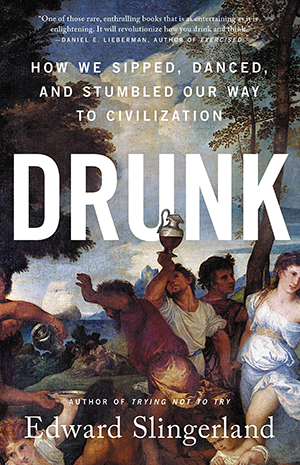
The human body, writes scholar Edward Slingerland in this immensely readable exploration of drunkenness, “clearly see[s] alcohol as a serious threat.” Not only does the alternatively beloved and reviled vice temporarily impair “a big chunk of the brain,” but it also “involves the ingestion of a toxin, a substance so harmful to the human body that we possess elaborate, multi-layered physiological machinery dedicated to breaking it down and getting it out of our systems as quickly as possible.” Why then, have humans dedicated millennia to developing new means of imbibing?
Blending history, anthropology, neuroscience, genetics, archaeology and a range of other disciplines, Drunk outlines the manifold merits of intoxication, from fostering creativity to relieving stress to building social bonds. Though Slingerland is perhaps too quick to underplay alcohol’s dangers (“We may have started relaxing with Dr. Jekyll, but we risk ending up wasted with Mr. Hyde,” notes the Wall Street Journal in its review), his argument is compelling and, above all, a whole lot of irreverent fun.
“My central argument is that getting drunk, high, or otherwise cognitively altered must have, over evolutionary time, helped individuals to survive and flourish, and cultures to endure and expand,” the author notes in the book’s introduction. “... To have survived this long, and remained so central to human social life, intoxication’s advantages must have—over the course of human history—outweighed the more obvious negative consequences.”
/https://tf-cmsv2-smithsonianmag-media.s3.amazonaws.com/accounts/headshot/mellon.png)
/https://tf-cmsv2-smithsonianmag-media.s3.amazonaws.com/accounts/headshot/mellon.png)